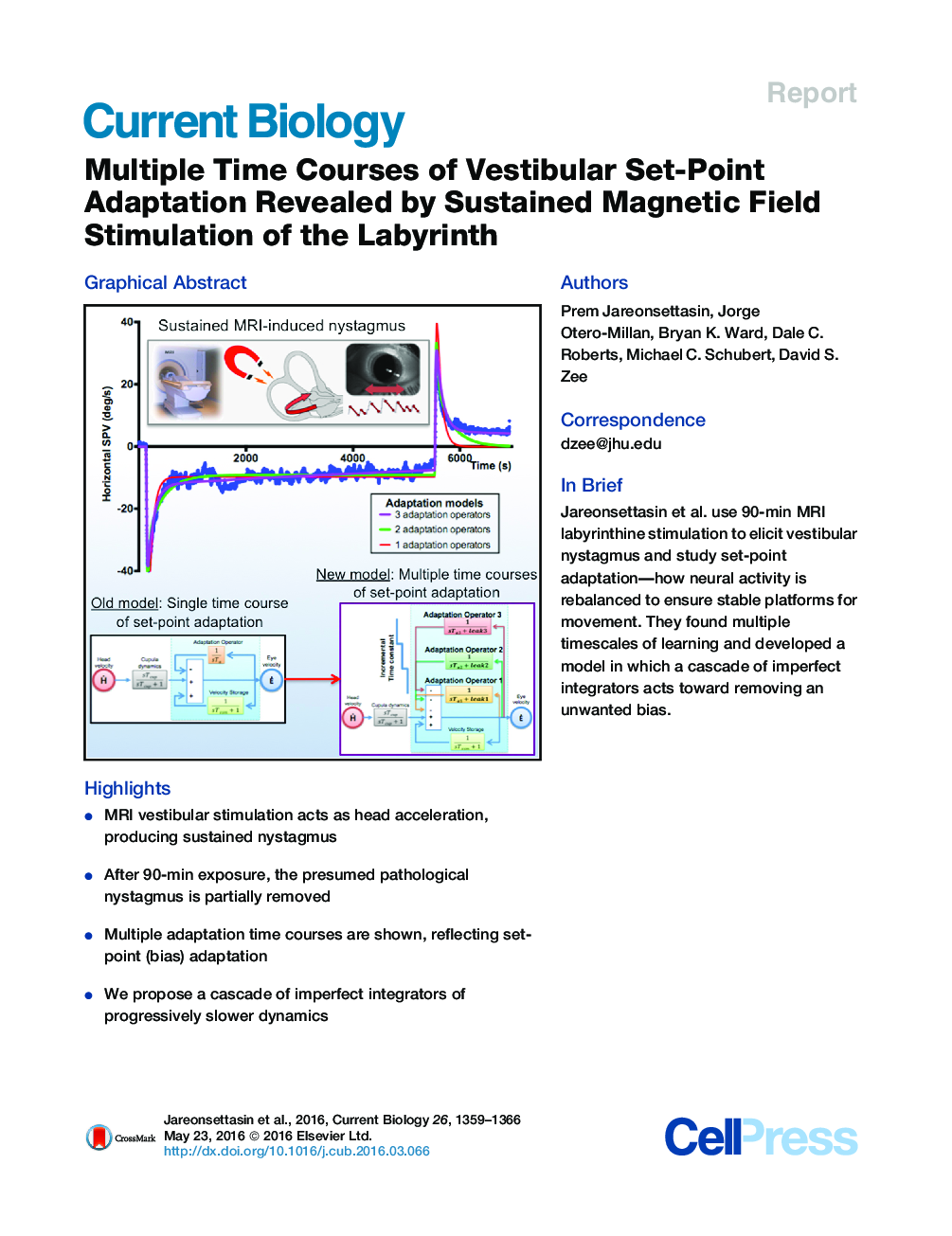| کد مقاله | کد نشریه | سال انتشار | مقاله انگلیسی | نسخه تمام متن |
|---|---|---|---|---|
| 2042654 | 1073228 | 2016 | 8 صفحه PDF | دانلود رایگان |
• MRI vestibular stimulation acts as head acceleration, producing sustained nystagmus
• After 90-min exposure, the presumed pathological nystagmus is partially removed
• Multiple adaptation time courses are shown, reflecting set-point (bias) adaptation
• We propose a cascade of imperfect integrators of progressively slower dynamics
SummaryA major focus in neurobiology is how the brain adapts its motor behavior to changes in its internal and external environments [1 and 2]. Much is known about adaptively optimizing the amplitude and direction of eye and limb movements, for example, but little is known about another essential form of learning, “set-point” adaptation. Set-point adaptation balances tonic activity so that reciprocally acting, agonist and antagonist muscles have a stable platform from which to launch accurate movements. Here, we use the vestibulo-ocular reflex—a simple behavior that stabilizes the position of the eye while the head is moving—to investigate how tonic activity is adapted toward a new set point to prevent eye drift when the head is still [3 and 4]. Set-point adaptation was elicited with magneto-hydrodynamic vestibular stimulation (MVS) by placing normal humans in a 7T MRI for 90 min. MVS is ideal for prolonged labyrinthine activation because it mimics constant head acceleration and induces a sustained nystagmus similar to natural vestibular lesions [5 and 6]. The MVS-induced nystagmus diminished slowly but incompletely over multiple timescales. We propose a new adaptation hypothesis, using a cascade of imperfect mathematical integrators, that reproduces the response to MVS (and more natural chair rotations), including the gradual decrease in nystagmus as the set point changes over progressively longer time courses. MVS set-point adaptation is a biological model with applications to basic neurophysiological research into all types of movements [7], functional brain imaging [8], and treatment of vestibular and higher-level attentional disorders by introducing new biases to counteract pathological ones [9].
Graphical AbstractFigure optionsDownload high-quality image (244 K)Download as PowerPoint slide
Journal: - Volume 26, Issue 10, 23 May 2016, Pages 1359–1366
